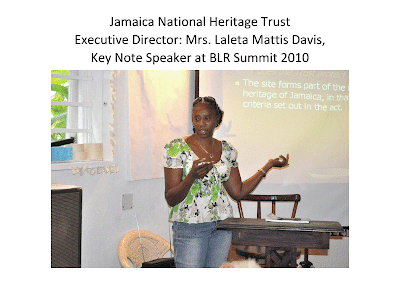 |
| Artificial Beach created at Blue Lagoon. Photo courtesy Diana McCaulay |
Removal of first generation mangroves, undergrowth and decaying vegetation is a huge mistake which Portland Parish Council, NEPA and people like us must not allow to be repeated. Coastal degradation is an environmental and social issue of national importance. It represents a terrible cost to Blue Lagoon and to Portland's sustainable development and individual dreams.
Mangrove roots are underwater filters and cleaning systems that fishes and marine organisms require - much as trees and plants create oxygen and filter the air we humans breathe. Without clean water, fish die. Without clean water and air, animals and humans die. Decaying plant and animal matter become the soil we need for planting food that our lives depend on.
• mangrove roots underwater systems hide young fish (hatchlings) because larger predator fish cannot maneuver mangrove root nurseries
• all tree root systems help prevent erosion of soil surrounding Blue Lagoon, removing trees/plants causes hillside soils to wash away
• mangrove canopies (leafy branches) are home, nesting places, rest stops and housing schemes for birds, much like human settlements
• roosting, bird droppings fertilize the soil beneath their canopy, droppings include seeds and other nutrients and natural fertilizers
• bush, plants and undergrowth are home and safe haven for smaller creatures and microcosms
• chopping down trees and plants signals degradation of Nature's support systems sustaining OUR earth
• trees filtering systems create oxygen, roots help stabilize the soil, decayed plant matter creates new soil
• plants take their nutrients from soil and water
• our nutrients come from plants and other species in natures food chain
• when we kill off plants and other species, we are killing our own habitat, and inevitably, our species
Community focus and involvement is the only solution. I ask everyone concerned to help make certain no further damage comes upon the waters and shores surrounding Blue Lagoon.













